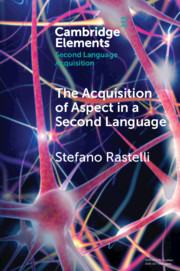Element contents
The Acquisition of Aspect in a Second Language
Published online by Cambridge University Press: 09 November 2020
Summary
- Type
- Element
- Information
- Online ISBN: 9781108903455Publisher: Cambridge University PressPrint publication: 03 December 2020
References
- 12
- Cited by

